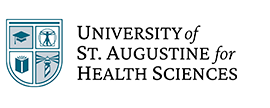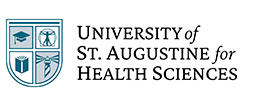
“Sit up straight!” It’s not just an annoying thing our parents and teachers used to tell us—it’s actually good advice for our health. The term “posture” refers to the position in which we hold our bodies. We rely on our postural muscles to maintain balance, prevent the forces of gravity from pushing us forward, and move in ways that place the least strain on supporting muscles and ligaments. ((American Chiropractic Association. “Maintaining Good Posture.” https://acatoday.org/content/posture-power-how-to-correct-your-body-alignment.))
Many of us spend our entire workday in a relatively static position, so it’s important that our bodies are positioned correctly. In this post, we highlight the benefits of correct posture and offer exercises to help you improve your posture at work.
Benefits of Correct Posture
Numerous factors can contribute to poor posture, including tight or weak muscles, stress, obesity, and wearing unsupportive shoes. Poor posture can lead to back pain, breathing problems, and headaches—and it can even impact mood. ((Harvard Health Publishing. “Posture and back health.” March 9, 2014. https://www.health.harvard.edu/pain/posture-and-back-health. Accessed: January 26, 2022))
It’s important to recognize that posture can have a profound impact on your health and well-being, as well as your ability to thrive at work. Improving your posture may provide the following benefits:
1. Increased Confidence
Correcting your posture can impact the way you feel about yourself. One study found that students who held an upright, confident posture were much more likely to have confidence in their thinking—and performed better on math tests. Feeling more confident in your ideas at work will ultimately help you succeed.
2. More Energy
Poor posture can negatively affect energy levels, resulting in fatigue. Practicing good body alignment may help you remain focused and energized at work. Whether you’re delivering packages or caring for patients, correct posture can allow you to power through the day more easily.
3. Greater Self-Esteem and Better Mood
In addition to giving you more energy, better posture can also reduce depressive feelings and improve your self-esteem and mood. Feeling good about your professional life often starts with feeling positive about yourself.
4. Easier Breathing
When the body is aligned correctly, it’s easier to breathe. Slouching can reduce lung capacity, leading to shortness of breath. Having difficulty breathing can impact your ability to do your best work. To breathe more life into your lungs and career, try altering your posture.
5. Less Frequent Headaches

Bad posture creates tension in the upper back, neck, and shoulders, leading to headaches that manifest as throbbing pain in the base of the skull and sometimes the forehead. Headaches are no fun, so this is an incentive to have good posture.
6. Reduced Risk of Injury
Proper posture can help you avoid injury, especially to your back, shoulders, arms, and wrists. One of the most common reasons people see a doctor or miss days of work is back pain. It’s particularly important to have good standing posture, as standing for long periods of time is associated with short-term adverse health issues, such as back pain, fatigue, and leg cramps.
7. Boosted Productivity
Research shows that posture impacts productivity. If you’re in pain, injured, or fatigued, or if you lack self-confidence, you will likely have trouble staying focused and productive at work. Because improving your posture can positively impact your mental and physical health, it enables you to be a more productive member of the team.
Exercises to Improve Posture at Work
By staying active, maintaining a healthy weight, being mindful of body positioning, and adding strengthening exercises to your routine, you can improve your posture.
Below, we illustrate ways to correct your posture in various work environments, to help foster a healthier mind-body connection that supports productivity..
If You Sit at a Desk All Day
If you work at a desk all day, and especially if you type on a keyboard, setting up an ergonomically correct workstation is important for maintaining the health of your back, shoulders, arms, and wrists. Ideally, your desk should be slightly below elbow level so that your forearms and wrists can stay parallel to the floor when typing. Be sure that your shoulders stay relaxed, not hunched. Typing with poor posture and ergonomics can cause various types of repetitive strain injury, such as carpal tunnel syndrome and tendinitis. These conditions can affect not just the wrists but the whole upper body. They are painful and can be difficult to treat, so it’s important to nip them in the bud.
People who work desk jobs may also have an increased risk of health problems from being too sedentary, so be sure to balance your sitting time with regular exercise.
Correct Sitting Posture


Exercises to Help Correct Sitting Posture
Try the exercises below, which you can do even at your desk, to improve your sitting posture.
1. Chin tucks: You can do this exercise at your desk. It helps relieve neck pain while also improving the neck’s strength, flexibility, and function.
- Sit upright and look straight ahead.
- Pull the chin down toward the chest.
- Hold for 5 seconds, then release.
- Repeat 10 times, or as tolerated.
2. Single leg extension: You can do this exercise at home or at your desk. It will help train your core muscles to keep your pelvis stabilized.
- Sit upright in a chair with your feet planted on the floor, hip-width apart.
- Lift one leg to a horizontal position.
- Return to the starting position.
- Do sets of 10 reps, or as tolerated.
- Repeat with the other leg.
If You’re Behind the Wheel All Day
In addition to causing back pain and headaches, driving in an incorrect position can also increase your risk for serious injury behind the wheel. Improving your driving position can literally save your life.
Correct Driving Posture


Exercises to Correct Driving Posture
Try the following exercises to improve your driving posture and remain pain-free while making deliveries, transporting others, or traveling all day:
1. Shoulder blade squeeze: This exercise helps reduce pressure on the neck and shoulders.
- With your hands on the steering wheel, bring your shoulder blades back and up.
- Squeeze your shoulder blades together as if you’re trying to squeeze a pencil in the middle of your back.
- Hold for 3 seconds, then release.
- Repeat 10 times, or as tolerated.
2. Seated pelvic tilt: This exercise activates the abdominal and external oblique muscles and can help improve posture.
- Press your lower back into the car seat.
- Inhale and tilt your pelvis forward to create an arch in your lower back.
- Hold for 3 seconds, then release.
- Repeat 10 times, or as tolerated.
If You’re on Your Feet All Day
Studies have shown that prolonged standing activities may contribute to lower-extremity and back disorders. Given these risks, it’s important to improve your standing posture.
Correct Standing Posture


Exercises to Correct Standing Posture
Try the following exercises to improve posture and relieve pain while standing so that you’re prepared to teach class, treat patients, or guide tours comfortably:
1. Bear hug: This stretch relieves tight shoulders and tension in the neck and back.
- Wrap your arms around your body as if you’re hugging yourself.
- Increase the stretch by holding onto your shoulders and pulling.
2. Calf raises: This exercise strengthens the calf muscles, which will help to support your ankles and feet.
- Rest your hands against a wall or sturdy object.
- Raise up on the balls of your feet so that your heels are off the ground.
- Hold for a few seconds, then return to the starting position.
If You Do a Lot of Heavy Lifting
Lifting heavy items is one of the leading causes of injury in the workplace. In 2018, the U.S. Bureau of Labor Statistics reported over 142,000 back injury cases involving days away from work, with occupational groups that traditionally require heavy lifting accounting for more than half of these injuries. Correcting your lifting posture can help you avoid injury and pain.
Correct Lifting Posture


Exercises to Correct Lifting Posture
Try the following exercises to improve your lifting posture:
1. Squat: This exercise strengthens your knees and hips, while also increasing flexibility.
- Stand with your feet slightly wider than your hips and your toes pointed slightly outward.
- Keep your core tight and chest up, and then squat down by pushing your knees to the side and moving your hips back.
- Pause in the squat, then return to the starting position.
2. Lower trunk rotation: Increases flexibility in the lower back and hips, allowing for greater mobility in the spine.
- Start by lying on your back with your knees bent and your feet flat on the floor.
- Keeping your feet on the floor, allow your knees to fall to one side of your body.
- Using your abdominal muscles, move your legs to the opposite side.
- Repeat 5 to 10 times on each side.
If you continue to struggle with posture or chronic pain, you might consider working with a physical therapist. A physical therapist will not only work to treat your pain, but will also help you prevent further injury by regaining full range of motion. Your PT will offer additional exercises to strengthen the muscle groups you need to achieve the posture that’s optimal for your body. Your PT might also recommend you to wear a posture corrector, especially if you have back problems that prevent you from doing the correct pose by yourself. Whether you need a posture corrector or not, what’s important is that having proper posture can help avoid health implications as a result of posture problems.
Sources for Infographic:
Castaneda, Ruben. “10 Ways Poor Posture Can Harm Your Health.” U.S. News & World Report. Febuary 1, 2018. https://health.usnews.com/wellness/slideshows/10-ways-poor-posture-can-harm-your-health. Accessed: January 26, 2022
Cleveland Clinic. “Back Health and Posture.” Last reviewed April 16, 2019. https://my.clevelandclinic.org/health/articles/4485-back-health-and-posture. Accessed: January 26, 2022
Edbrooke, Robert. “Why Your Driving Posture Matters.” Geico Living. Accessed January 19, 2022. https://www.geico.com/living/driving/auto/car-safety-insurance/posture/. Accessed: January 26, 2022
Finneran, Aoife, and Leonard O’Sullivan. “Force, posture and repetition induced discomfort as a mediator in self-paced cycle time.” International Journal of Industrial Ergonomics 40, no. 3 (May 2010): 257–266. https://doi.org/10.1016/j.ergon.2010.01.004. Accessed: January 26, 2022
Gable, Shelly. “The Benefits of Positive Emotions at Work.” Corporate Wellness Magazine, accessed January 19, 2022. https://www.corporatewellnessmagazine.com/article/benefits-positive-emotions-work. Accessed: January 26, 2022
Grabmeier, Jeff. “Study: Body Posture Affects Confidence In Your Own Thoughts.” Ohio State News, October 4, 2009. https://news.osu.edu/study–body-posture-affects-confidence-in-your-own-thoughts/. Accessed: January 26, 2022
Kang, Kyung Woo, Sang In Jung, Do Youn Lee, Kyoung Kim, and Na Kyung Lee. “Effect of sitting posture on respiratory function while using a smartphone.” Journal of Physical Therapy Science 28, no. 5 (May 2016): 1496–1498. doi: 10.1589/jpts.28.1496.
Mayo Clinic. “Good posture tips.” June 22, 2021. https://www.mayoclinic.org/healthy-lifestyle/adult-health/multimedia/back-pain/sls-20076817. Accessed: January 26, 2022
National Health Service. “10 headache triggers.” Last reviewed February 9, 2021. https://www.nhs.uk/conditions/headaches/10-headache-triggers/. Accessed: January 26, 2022
National Institute of Neurological Disorders and Stroke. “Low Back Pain Fact Sheet.” Last modified November 15, 2021. https://www.ninds.nih.gov/Disorders/Patient-Caregiver-Education/Fact-Sheets/Low-Back-Pain-Fact-Sheet. Accessed: January 26, 2022







